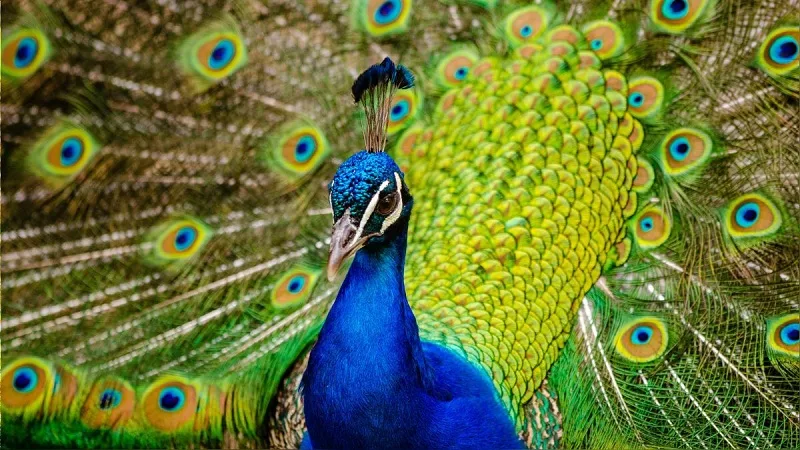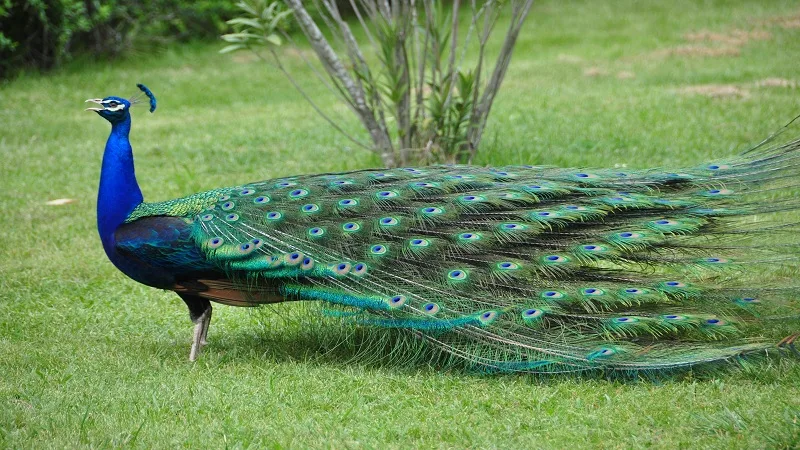Peacocks are some of the most majestic and beautiful birds that can be found in any ecosystem. Here we tell you everything about them.
DIARIO DEL HUILA, ENVIRONMENT
The peacock is known throughout the world for its slender body shape, colours, and striking tail. In any case, few people know that there is not only one species within their group and that their beauty is very expensive for males. Do you want to learn 10 peacock curiosities?
This group of birds is the perfect example of sexual selection, a theory in which it is postulated that attracting females of the same species can have a very negative effect on individual survival. How can peacocks avoid being preyed on with such a conspicuous tail? What is your average life expectancy? Keep reading, because here we show you 10 facts about them that will not leave you indifferent.
The peacock is not only a species
Before going fully into the particularities of this bird at a reproductive level, it is necessary to circumscribe it from a genetic point of view. First of all, it should be noted that there are 3 different species of peacocks. Although they all belong to the Phasianidae family, they present certain differential features. These are the following:
Green-necked peacock (Pavo muticus): this species is distributed throughout the tropical forests of Southeast Asia. As its name indicates, the neck of the males is green and they are larger than the specimens of the typical species (P. cristatus).
Common Peafowl (Pavo cristatus): This species is native to South Asia and is distributed throughout Southeast India. It is smaller than the green-necked turkey and the males have characteristic bluish tones in their body feathers.
Congo Peafowl (Afropavo congensis): It is very different from the 2 typical turkey species, as it belongs to a different genus. Its colors are somewhat less striking, it is smaller and its body appears more flattened. Simply put, it looks like a cross between a guinea fowl and a common peacock.
It may interest you: World Sea Turtle Day
A fairly specific distribution
From now on we are going to focus on the Pavo cristatus species, since it is the best known from a sociocultural point of view. When recording the movements of this species, it has been detected that it does not migrate or move clearly from its natural habitat range. In addition, it has a great predilection for deciduous forests with abundant water sources, especially at considerable distances from human nuclei.
One of the most beautiful aspects of the world
Common peacocks are known for their exquisite plumage and slender build. They are large birds that measure from 100 to 110 centimeters from beak to tail and weigh from 4 to 6 kilograms on average. Females are smaller than males and also have smaller body measurements than their peers.
The males have a phosphor blue coloration on their back, neck and head, as well as golden feathers that surround their sides and back. The females are much less conspicuous and their main colors are white, black and greyish (although their neck retains greenish tones).
The tail of the peacocks: an unknown unknown
Although most peacock curiosities refer to the size and shape of the males’ tails, it should be noted that this feature has not yet been fully explained. While tail size and complexity are honest signs of male genetic quality, it doesn’t appear that females choose them based on these traits alone.
Various investigations have failed to explain selection by females by relating it only to size, symmetry, or the number of ocelli on the males’ tails. This does not mean that every theory is invalid, but rather that the reproductive mechanisms of these birds are much more complex than one might initially believe.
Highlight 1: Another of the curiosities of the peacock is that, contrary to what its appearance suggests, it is a rather solitary animal.

